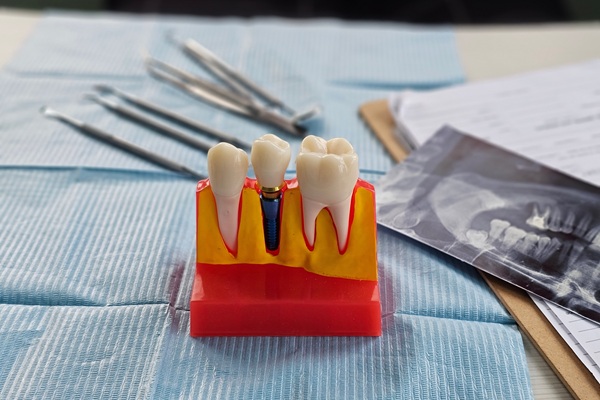When Is Root Canal Retreatment Necessary?

Considering a procedure like root canal retreatment can be daunting. You’ve already had a procedure to fix your tooth and now the problem is back again. What happened to your tooth? Why isn’t the problem fixed? Knowing why retreatment is sometimes necessary, and how it is accomplished, can help ease your mind and allow you to pursue the proper treatment course.
What is a root canal?
A tooth has three components: the crown, the neck and the root. The crown is the top part of a tooth that can be seen. The neck is where the tooth enters the gumline. The root is the part of the tooth that embeds in the bone. Within a tooth’s root is a material called pulp, and within this pulp are nerves and blood vessels. When the pulp of a tooth’s root gets infected or inflamed, often a root canal is required.
There are three main steps to a root canal. First, any damaged areas of the tooth are repaired to help prevent future issues. Second, the inflamed or infected pulp material is removed from the tooth’s root. Last, new inert material is inserted into the root to replace any damaged pulp that had to be removed.
What is root canal retreatment?
What causes root canal retreatment to be necessary?
Root canal treatments are commonplace in dentistry today. The equipment to handle them has improved, and they can often be completed in just a couple of appointments (sometimes in just one). Due to advances in technology and techniques, root canal procedures have a high success rate.
Unfortunately, sometimes things occur that cause additional damage to an already repaired tooth:
- An injury can cause a fracture in a patient’s tooth, allowing a new infection to spread.
- A crown can be jarred loose or crack. This causes fresh exposure and opens the tooth to infection.
- A new cavity or other decay in the tooth can expose the root to bacteria, opening up the tooth to a new infection.
If left unchecked, these new sources of infection can be just as painful and damaging as the original. It is a good idea to consult with a professional before the problem gets worse.
What is different in retreatment?
Most root canal retreatment procedures require two appointments. The whole process is similar to the regular treatment but adds a couple of steps. In the first treatment, damaged areas of the tooth are repaired. All damaged pulp, as well as root canal filling materials, are removed from the root. Then an antibacterial material is applied to the root system. The tooth is closed back up, then the antibacterial material is left to reduce bacteria in the root.
At the second treatment, the antibacterial paste is removed. Once all the paste is gone, the canals are cleaned again. Last, new inert material is once again inserted into the root to replace any material that had to be removed.
Conclusion
While frustrating, a new source of infection in the root of an already treated tooth is likely going to require root canal retreatment. When this occurs, you need to revisit your dentist or endodontist as soon as possible.
Are you considering root canal retreatment in the Nashville area? Get more information at https://www.sheats-endo.com.
Recent Posts
When a root canal fails, a root canal retreatment must happen. Getting a root canal treatment is better than a dental extraction. If an endodontist sees that your tooth still has good bone support and healthy gums under or around it, a root canal can save the tooth. A root canal is a less expensive…
Tooth pain and dental trauma can be distressing and require immediate attention to prevent further damage and alleviate discomfort. An emergency endodontist specializes in diagnosing and treating severe tooth pain and trauma, offering expert care to save a tooth, relieve pain, and protect long-term oral health. When sudden tooth pain or injury strikes, seeking help…
A root canal cleans out infection from the interior of a tooth, but dentists will attempt other options, such as dental fillings, when possible. Therefore, it can be hard for patients to know when they may need a root canal or whether a problem can be solved in another way. The signs that you may…
When you have an infected or severely damaged tooth, a tooth extraction may seem the only option. However, endodontic therapy offers an alternative. It allows you to save your natural tooth and preserve your smile, avoiding the need for future tooth replacement. This procedure, commonly known as a root canal, is designed to remove infection,…


